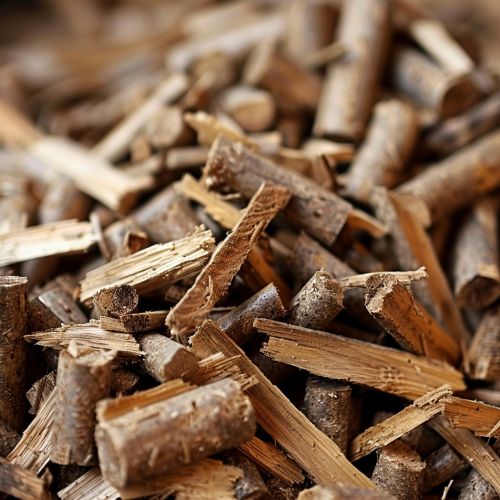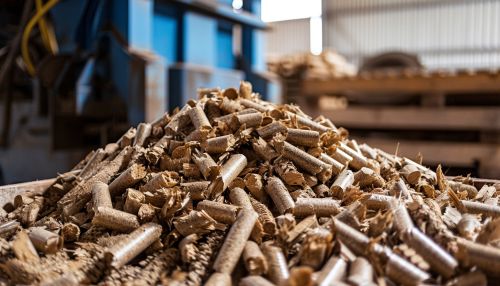Biosorption: Difference between revisions
(Created page with "== Introduction == Biosorption is a physicochemical process that involves the removal of substances, particularly heavy metals and other contaminants, from aqueous solutions using biological materials. This method leverages the natural affinity of certain biological materials for various contaminants, making it an eco-friendly and cost-effective alternative to traditional methods of water purification and waste treatment. == Mechanisms of Biosorption == Biosorption in...") |
No edit summary |
||
| Line 23: | Line 23: | ||
Precipitation involves the formation of insoluble compounds that settle out of the solution. This can occur when the biosorbent material alters the local pH or provides nucleation sites for the formation of precipitates. | Precipitation involves the formation of insoluble compounds that settle out of the solution. This can occur when the biosorbent material alters the local pH or provides nucleation sites for the formation of precipitates. | ||
[[Image:Detail-91727.jpg|thumb|center|Biomass material used for biosorption.|class=only_on_mobile]] | |||
[[Image:Detail-91728.jpg|thumb|center|Biomass material used for biosorption.|class=only_on_desktop]] | |||
== Types of Biosorbents == | == Types of Biosorbents == | ||
Latest revision as of 22:41, 19 June 2024
Introduction
Biosorption is a physicochemical process that involves the removal of substances, particularly heavy metals and other contaminants, from aqueous solutions using biological materials. This method leverages the natural affinity of certain biological materials for various contaminants, making it an eco-friendly and cost-effective alternative to traditional methods of water purification and waste treatment.
Mechanisms of Biosorption
Biosorption involves several mechanisms that contribute to the binding of contaminants to the biosorbent material. These mechanisms include:
Adsorption
Adsorption is the process by which contaminants adhere to the surface of the biosorbent. This can occur through physical adsorption, where contaminants are held by weak van der Waals forces, or through chemical adsorption, where stronger covalent or ionic bonds are formed.
Ion Exchange
Ion exchange involves the replacement of ions in the biosorbent with ions from the solution. This process is particularly effective for the removal of heavy metals, as many biological materials contain functional groups that can exchange cations with metal ions in the solution.
Complexation
Complexation occurs when contaminants form stable complexes with functional groups on the biosorbent. This mechanism is often facilitated by the presence of ligands such as carboxyl, hydroxyl, and amino groups on the biosorbent material.
Precipitation
Precipitation involves the formation of insoluble compounds that settle out of the solution. This can occur when the biosorbent material alters the local pH or provides nucleation sites for the formation of precipitates.


Types of Biosorbents
Biosorbents can be derived from various biological sources, each with unique properties that influence their effectiveness in removing specific contaminants.
Algae
Algae are widely studied for their biosorption capabilities due to their high surface area and the presence of functional groups such as carboxyl, hydroxyl, and sulfate. Algal biomass can effectively remove heavy metals, dyes, and other pollutants from aqueous solutions.
Fungi
Fungal biomass, particularly from species like Aspergillus and Penicillium, has shown significant potential for biosorption. Fungi possess cell walls rich in chitin and chitosan, which contain amino and hydroxyl groups that facilitate the binding of contaminants.
Bacteria
Bacterial biomass, including both live and dead cells, can be used as biosorbents. Bacteria such as Bacillus and Pseudomonas have cell walls with peptidoglycan and teichoic acids, which provide binding sites for various contaminants.
Agricultural By-products
Agricultural by-products such as rice husks, sawdust, and fruit peels are abundant and inexpensive sources of biosorbents. These materials contain cellulose, hemicellulose, and lignin, which contribute to their biosorption capabilities.
Factors Affecting Biosorption
Several factors influence the efficiency of the biosorption process, including:
pH
The pH of the solution affects the ionization state of the functional groups on the biosorbent and the speciation of the contaminants. Optimal pH levels vary depending on the type of biosorbent and the contaminants being removed.
Temperature
Temperature can impact the kinetics of the biosorption process. Higher temperatures may increase the rate of diffusion of contaminants to the biosorbent surface but can also lead to the desorption of bound contaminants.
Contact Time
The duration of contact between the biosorbent and the solution affects the extent of biosorption. Longer contact times generally result in higher removal efficiencies, although equilibrium is typically reached after a certain period.
Initial Concentration
The initial concentration of contaminants in the solution influences the biosorption capacity. Higher concentrations can lead to saturation of the biosorbent, reducing its effectiveness.
Applications of Biosorption
Biosorption has a wide range of applications in various industries due to its versatility and effectiveness.
Wastewater Treatment
Biosorption is extensively used in the treatment of industrial wastewater to remove heavy metals, dyes, and other pollutants. Industries such as mining, textiles, and electroplating benefit from this eco-friendly method.
Environmental Remediation
Biosorption is employed in the remediation of contaminated soils and water bodies. It offers a sustainable solution for the cleanup of sites affected by industrial activities and accidental spills.
Resource Recovery
In addition to removing contaminants, biosorption can be used for the recovery of valuable metals from industrial effluents. This process not only reduces environmental pollution but also provides an economic benefit.
Advantages and Limitations
Advantages
- **Cost-Effectiveness:** Biosorbents are often derived from waste materials, making the process economically viable. - **Eco-Friendly:** Biosorption is a green technology that does not produce harmful by-products. - **High Efficiency:** Biosorbents can achieve high removal efficiencies for a wide range of contaminants.
Limitations
- **Regeneration:** The regeneration of biosorbents can be challenging and may require chemical treatments. - **Selectivity:** Some biosorbents may have limited selectivity for specific contaminants. - **Scalability:** Scaling up the biosorption process for industrial applications can be complex.
Future Prospects
The future of biosorption research and application looks promising, with ongoing advancements in the development of novel biosorbents and optimization of process conditions. Areas of focus include:
- **Genetic Engineering:** Enhancing the biosorption capabilities of microorganisms through genetic modification. - **Nanotechnology:** Incorporating nanomaterials to improve the surface area and reactivity of biosorbents. - **Hybrid Systems:** Combining biosorption with other treatment methods to enhance overall efficiency.
